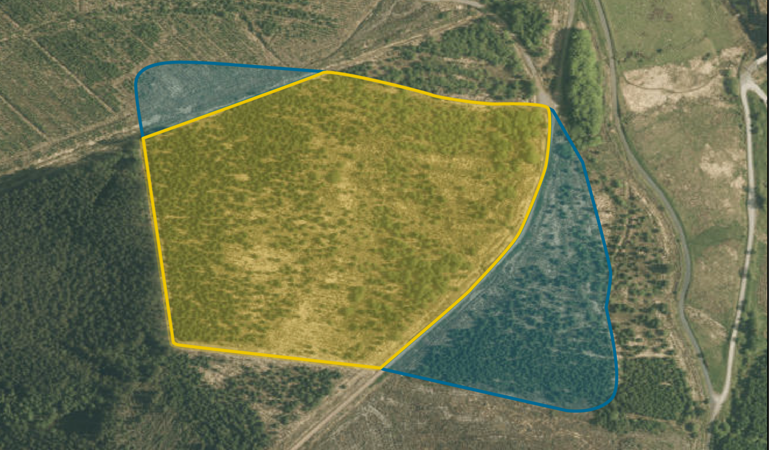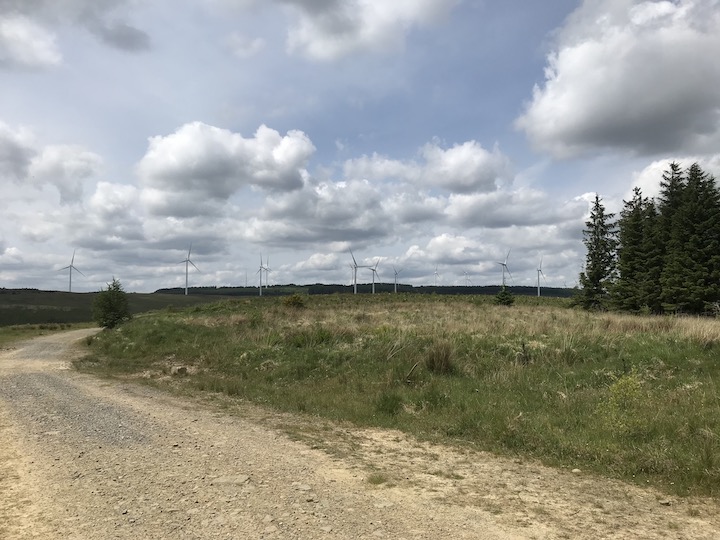Work finishes to protect a Roman Marching Camp at Ystradfellte that ‘tells the story of the Roman Conquest of Wales’

Aerial image of the camp with the boundary highlighted to show the outline. Different shade of highlight shows the areas protected, and those that cannot be protected
Work to protect the remains of a Roman Marching Camp near Ystradfellte has been finished by contractors working on behalf of Natural Resources Wales.
The yellow area in the image denotes the site and boundaries that were worked on to preserve the scheduled monument.
The blue area in the image denotes areas of the Roman Marching Camp which are too damaged to be worked.
The camp is thought to have been used by the Romans during the conquest of Wales in the first century AD and is listed as a scheduled monument.
Remains of the earth boundary banks and ditch of the camp have been preserved by NRW as part of their duty to protect important historical features under the UK Woodland Assurance Standard.
The recent work to preserve the remains involved removing tree growth using a flail mounted on an excavator. The excavator itself moved using extra-wide floatation tracks to reduce ground pressure. These tracks reduced the impact of the work on the protected site, but also allowed the heavy excavator to work on the wet ground.
Paul Dann, Land Management Team Leader for Natural Resources Wales said:
“Managing woodland sustainably is much more than what people usually think. We need to make sure that we produce quality timber and protect biodiversity, but we also need to protect the cultural and historical features on the land that we manage.
“This means treating some parts of land differently. This could include simply not planting on the land or removing growth that will damage the historical feature. We work closely with Cadw to make sure that we approach the preservation of each ancient monument in the right way.
“Many scheduled monuments have been worn down over centuries, and might not be obvious to passers-by, but they are important pieces of our collective history and need to be preserved wherever possible.”
The monument comprises the remains of a Roman marching camp, probably dating from the conquest of Wales by the Romans in the first century AD (probably around AD 74 – 77). It was built as a temporary camp by a marching army as units of the Roman legions pushed west. The camp is a classic playing card shape in plan, measuring 390m E/W by 240m N/S. It is defined by a turf rampart 2m wide by 0.6m high, and an external ditch 0.4m deep. A clavicula entrance was identified on the S side when the site was first recognised in aerial photographs. The site lies in an area of conifer plantations, with the whole camp previously forested. The majority of the scheduled area has now been clear felled although the banks and ditch are not easy to distinguish.
The monument is of national importance for its potential to enhance our knowledge of Roman military organisation. The monument forms an important element within the wider context of the Roman occupation of Wales and the structure itself may be expected to contain archaeological information in regard to chronology, building techniques and functional detail.
The scheduled area comprises the remains described and areas around them within which related evidence may be expected to survive.
Source: Cadw



